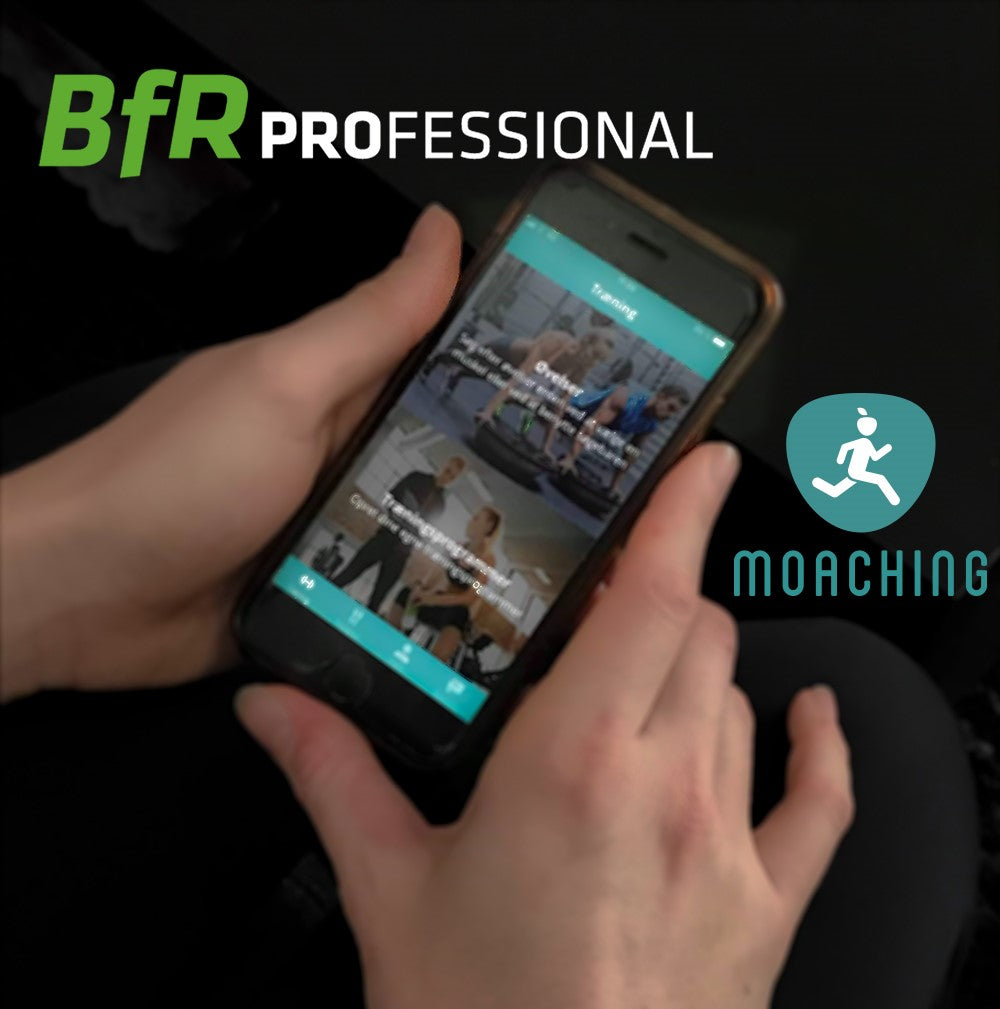
With all the popularity and hype which blood flow restriction (BFR) training is receiving for its accelerated development of both muscle strength and mass, you’ve probably heard the terms blood flow restriction training, occlusion training or KAATSU training floating around online or in your local gym.
If you’re still unsure exactly what BFR training is or how to perform it, then this post is for you.
Terminology: BFR vs Occlusion vs KAATSU
For safety reasons, we need to first quickly address a few terminology issues.
You may see the terms blood flow restriction training, occlusion training and KAATSU training being used interchangeably – but that’s not strictly correct.
Occlusion training involves completely stopping the flow of blood into a part of the body. Occlusion training is extremely discouraged as it can result in damaged arteries, nerves, muscles, veins and an increase in risk of blood clots.
Whilst both blood flow restriction training and KAATSU training differ by only modifying blood flow rather than stopping it. KAATSU training uses expensive pneumatic tubes, cuffs and electronic monitors and requires a certified specialist to monitor you during your workout.
Blood flow restriction solutions, such as BfR Pro ARMS or LEGS, on the other hand, are simple to use and can easily be added to your workouts to maximise results. In other words, this is practical BFR training which means you adjust the pressure of the bands or straps yourself.
The history
KAATSU training was originally discovered in the 1960’s in Japan by scientist Yoshiaki Sato. Since then, there have been now hundreds of scientific studies from Japan, Denmark, Norway, England and USA researching the effects of blood flow restriction training.
The research to date has found that BFR training promotes muscle hypertrophy and strength gains more effectively compared to traditional low load weight lifting (10-30% of 1RM). In some research it has even provided better results than heavy load weight lifting (60-85% of 1RM) but the best response has been proven to be by combining low load BFR training with high load strength training.
A simple Google Scholar search about blood flow restriction training will provide you with plenty of academic articles on the topic to browse through.
What is blood flow restriction training?
Blood flow restriction training is a technique using straps around the top of your limbs in order to restrict blood flow to the veins but not your arteries. By doing so, you are allowing blood to enter into the muscle but not letting it leave again. This results in a massive increase in cell swelling (or “pump”) and a "danger" response in the muscle cells triggering it to restructure and become larger.
BfR straps also work to trap lactic acid within the muscle, creating an additional anabolic response which turns on protein synthesis. This metabolic stress is believed to play an important role in the beneficial effect of BFR training. These metabolites are implicated in creating a hypertrophic response including lactate, inorganic phosphate, and hydrogen ions.
Read more about how muscle fibres react during blood flow restriction.
Read more about blood flow restriction training and muscle hypertrophy.
What the scientific evidence shows
There have been numerous studies conducted into the benefits and efficacy of blood flow restriction training. Of interest to most people are the increased speeds with which muscle growth can be achieved.
A Danish study in 2012 researched whether BFR training could produce more efficient results than traditional resistance training (normally resulting in 15-25% muscle increase after 3 months). The study found that the subjects undergoing training with blood flow restriction achieved 35-40% muscle increase in only 3 weeks.
A similar study conducted with British elite rugby players in 2014 compared regular resistance training with the same training with added blood flow restriction. The study found that BFR training resulted in players’ squat strength, bench press, jump power and sprint time improving by 200% (Cook et al, 2014).
Is BFR training safe?
The short answer is: Yes, blood flow restriction training is safe; but there are a two key precautions you should take to avoid the potentially harmful effects which can come from accidently occluding your muscles or over training.
We’ve seen some YouTubers suggest using everything from knee wraps to bicycle inner tubes to restrict blood flow just to save a penny or two. But applying BfR straps correctly for accurate, consistent & even pressure on your muscles is easier said than done with make-shift straps (not to mention the risks you run of totally occluding the muscle!). Be sure to choose a quality-built product like the bands from BfR Pro which allow for easy application of strap to find the right tightness and quick release features, should you want to remove your straps in a hurry.
When performing a BFR workout, you are going to be dropping the weight considerably. Most blood flow restriction workouts utilise a weight of 20-40% of your one-rep max (1RM); or alternatively, around 40% of what you normally lift. You’ll also be focusing on a higher repetition range – around 15-30 reps per set – with short rest periods of around 30 seconds.
Take a look at our blood flow restriction workout suggestions for more ideas on how to incorporate BfR into your training. And don’t forget to share your personal success stories with the BfR family on Facebook, Instagram or Twitter using @bfrpro and #bfrpro.
Team BfR Professional

The Good Kind of Pain - A Study on BFR in Physiotherapy
In the spring of 2017, BfR Professional teamed up with two physiotherapist students focusing on the qualitative aspect of blood flow restriction training, and how people perceive the use of this still very new training method. Below you can read more about their interesting findings from their bachelor project.
Buckled up and ready for training
- A qualitative study based on interviews
By Højfeldt R. Jeanette, Jensen H. Pernille, BA. Physiotherapy, VIA University College Aarhus, Denmark.
Background and purpose
The project includes six participants. A physiotherapist, two patients with varying injuries and three self-trained subjects, one with an injury. In addition to using physiotherapists, all participants have been using blood flow restriction training in time periods spanning from three weeks to three months.
Results
The analysed data can be grouped into topics with key findings:
Application
Blood flow restriction training is versatile in its use and can, for instance, be used to max out in the last part of your session after high load training, or to prevent further pain from an injury during training. When tightening the band, some participants express a problem. They aren't sure whether the band is too tight or too loose, which is a common concern among the participants. This means that every individual has their own strategy to ensure the correct use, and therefore the tightening is self-perceived. Despite this issue, the band is reported easy to use:
Even though the band is tight, it gives the muscles room to expand during training.
Physical experience
A common experience is accelerated muscle atrophy compared to regular training. The participants observed visual changes in the veins, as these became more proinent and with a blue and red colour. This is an observation that the physiotherapist confirms. Another observation during training is a fast burning and a lactic feeling in the muscles. Several participants described blood flow restriction training as having a different feeling to its compared to regular training. The exhaustion was somehow different. One of the participants described the post experience like this:
Three out of six explain that blood flow restriction training has prevented pain from a current injury when training. One of them says that:
Back then, before I used the bands, I could barely do my exercises without feeling pain in my injury - I went home without working my muscles. It just hurt enormously.
Mental experience
The participants express great joy and satisfaction when using blood flow restriction training. Some mention that this kind of training is: fantastic, different, awesome, effective, a short and hard workout. In particular, they justify the relieving ability of the bands which causes the muscles to be stressed before the joint:
Just as annoying the soreness has been, it felt equally amazing - it's great because I feel alive.
Some of the participants report struggles with the low load training and motivation at the beginning:
At some points, it's demotivating not to have the usual kilos for someone who's used to training with a high load. But suddenly, I can take far more repetitions, and I came to notice that my legs become really tired, even without hurting the joints.
Among the participants, the feedback is an overall positive one concerning motivation for doing blood flow restriction training. For some, it was the applicability, for others, the competition and socialising.
Safety
The participants feel safe using blood flow restriction training. This is explained by the fact that they don't associate low load training with high risk of injury, despite tightening problems and a lack of knowledge:
I can go crazy while knowing I'm not going to break. I feel safe using it because I know the muscles get tired long before it ever gets dangerous for me.
Some of the participants report that the perception of safety is being created by the connection with the physiotherapist.
Conclusion
All participants found blood flow restriction training to be effective and said that it had a positive impact both physically and mentally. However, there is an issue with the subjective tightening of the bands, which requires more knowledge. The informants experienced a lactic and burning sensation, as well as an increased soreness, but this was not experienced as pain. This training method will suit both the elite and patients with injuries. However, consideration should be taken because blood flow restriction training can affect blood circulation.
Hope you enjoyed this read!
Team BfR Professional

Occlusion Training May Be a Paradigm Shift Within Fitness
In November 2016, we contributed to an online article about occlusion training on the Danish fitness website blivstor.dk. We're happy to do so since we're obviously enthusiastic about this new training method ourselves and want to share it with the world. The article is in Danish and can be found here.
BfR Professional on occlusion training
In some of our previous posts here on the BfR blog, we've outlined how practical blood flow restriction (BFR) or occlusion training works in simplified terms, what effects this training method can have and what results this might bring to your body.
In addition, we've gone through how to perform practical BFR training with our 4 tips on how to apply the correct pressure in another one of our blog posts recently, which you can check out here.
All our recommendations are made based on our own practical experience over the past two and a half years doing occlusion training in combination with studying the global scientific research within this topic, which is fortunately a body of work increasing continuously.
We view BFR training as a healthy complementary training method to your traditional training routine – not as a replacement for more heavy load oriented training as this too has its merits on improving your physical shape.
Simple and smart at the same time
The key is to be smart about your training and bring variation to the table using occlusion straps while being consistent over long periods of time. Preferably forever. This is basically why we've chosen "Simple concept, intelligent training" as our official slogan.
Take it to the next level with
Team BfR professional

A QUICK GUIDE to Adjusting Your BfR Pro Straps Correctly
When performing practical BFR training you need to adjust the pressure of your straps from a subjective standpoint. But we recommend following our tips below, which are based on up-to-date scientific research on the topic of BFR/occlusion training.
4 tips on how to apply the right pressure of your BfR Pro straps:
- Correct pressure is 5-7 out of 10 (0 = no blood flow restriction and 10 = fully restricted blood flow).
- Press down with one finger in the palm of your hand. Correct pressure will result in your skin changing colour from white to normal skin colour in max 2 seconds.
- Use the number of repetitions as a guide to adjust the pressure. A correct pressure should allow you to do 30 / 15 / 15 / 15 repetitions in each set in your first exercise. If this is not possible, you should either release some of the pressure of your BfR Pro straps or use less weight.
- Correct pressure should not cause any tingling or numbness in the occluded limbs.
BfR Pro products versus alternatives?
The alternative to BFR training with straps is to apply air pressure controlled equipment such as the patented KAATSU machinery. However, this very expensive equipment is not easily accessible or affordable, which makes it nearly impossible for ordinary people to reap the benefits of this amazing training method. Moreover, the people using this machinery actually still use the 4 tips described here to check for correct pressure.
As with any type of physical activity, always remember to listen to your body and keep a “trial and error” mindset to find out what really works for you. Also check out the other posts on our blog here - they're packed with inspiration and tips just for you and your workout.
To your success!
Team BfR Professional








